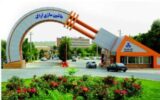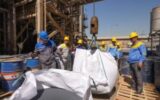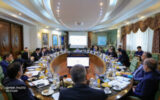
This resignation is related to a project called Hirsa Polymer Sahand Petrochemical, which has serious uncertainties about how it will be handed over to a second-hand contractor.

Mohammad Shariatmadari invited the journalists to the meeting.

With careful planning and implementation of corrective measures, the ethane unit repair time was reduced to 14 days, and the butane and propane export dock unloading operation was completed without disruption to exports.

The major overhaul of some units of the Bu Ali Sina Petrochemical Complex was successfully completed without stopping production, with the aim of removing production obstacles, improving equipment efficiency, and maintaining production sustainability.

The Director of Planning and Development of the National Petrochemical Industries Company emphasized the need to redefine governance structures and institutions to achieve digital governance, saying: "To achieve digital transformation, a digital-centric mindset must be institutionalized."

The meeting of the ordinary general assembly of the National Petrochemical Industries Company was held in the presence of the Deputy Minister of Petroleum for Petrochemical Affairs.

Emphasizing the need for convergence in solving the energy imbalance, an official official said: Holdings and petrochemical companies should use all available capacities to establish an energy management system.

The Director of Research, Technology, and Domestic Manufacturing at the National Petrochemical Industries Company emphasized the need for intelligent support for knowledge-based companies, the development of indigenous technologies, and the creation of a sustainable chain in the petrochemical industry in order to realize Iran's share in regional and global markets.

National Electricity Solving Strategy in Kermanshah Petrochemical; "Zahir" killed the key to the annual injecting of 5 million kWh.

The director of the Petrochemical Special Economic Zone Organization emphasized the need to use renewable and new energy in the development plan of the region.










